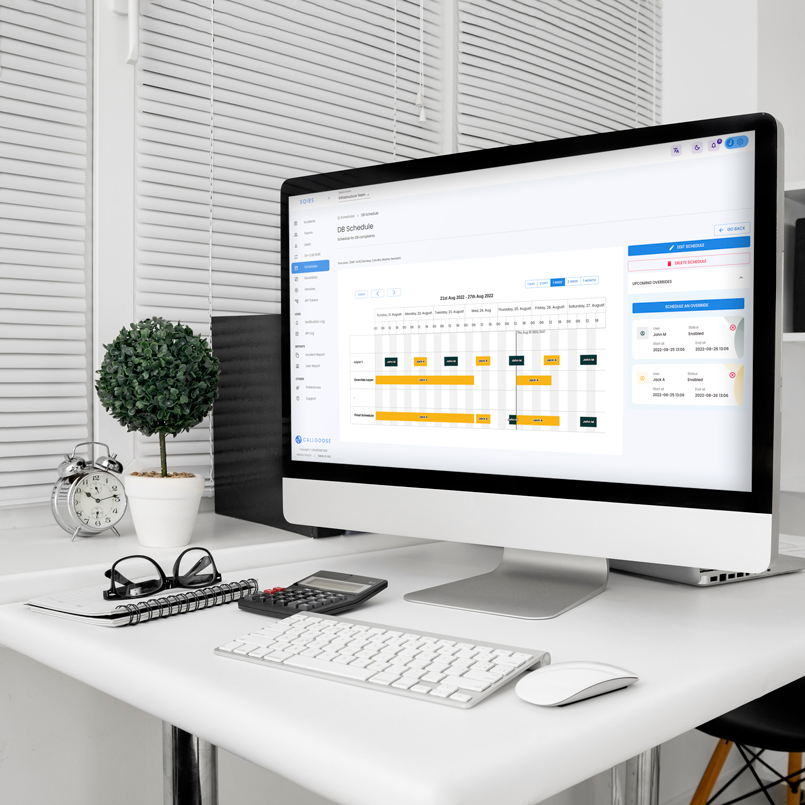Getting Started
Special
SINGLE SIGN-ON
Teams
Users
Escalation Policies
Service
Incident
Request
On-Call Shift
Schedules
Schedule Override
Logs
API
Webhook
Apps Integration
Reports
Preference
Profile
Automation
Self-Service Portal
FAQ
Automation
The Automation feature in Callgoose SQIBS allows users to automate repetitive tasks and streamline processes by creating Actions, Profiles, and Workflows. This guide provides an overview of the automation setup, with links to detailed documentation on creating each component.
Set up Automation
To set up automation in Callgoose SQIBS, users must perform the following steps:
- Create an Action
- Create a Profile
- Create a Workflow
Each of these components plays a vital role in building a comprehensive automation process. You can follow the links below for detailed guides on creating and managing Actions, Profiles, and Workflows.
1. Actions
An Action represents a specific task that will be executed in your automation workflow. Each action is customizable and can be set up to perform different types of tasks, such as Bash script, Python script, SSH command, etc...
2. Profiles
A Profile is used to define the context or environment in which your actions will run. Some Actions may require specific configurations for executing the task such as Kubernetes configuration file, etc...
3. Workflows
A Workflow combines multiple actions and profiles to create a complete automation process. It allows you to sequence actions and define how they are triggered. We are executing a Workflow to run the Automation.
Execute/Run Workflow
Callgoose SQIBS offers multiple ways to execute workflows, including manual execution from the Web, Slack, Microsoft Teams, or Mobile app as well as automated execution during incident creation. This section explains how to run workflows across these platforms.
Manual Execution
From Web
1. Open the Incident Info Page:
- Navigate to the incident in Callgoose SQIBS dashboard.
- Click to open the Incident info page.
2. Run the Workflow:
- Click the Run Workflow button.
- A dialog box listing all available workflows will appear.
3. Select and Execute:
- Choose the desired workflow and click Run Workflow.
From Mobile app(Android/iOS)
1. Open the Incident Info Page:
- Navigate to the incident inside App.
- Click to open the Incident info page.
2. Run the Workflow:
- Click the Run Workflow button.
- A dialog box listing all available workflows will appear.
3. Select and Execute:
- Choose the desired workflow and click Run Workflow.
From Slack or Microsoft Teams
Callgoose SQIBS also integrates with Slack and Microsoft Teams, enabling users to manually trigger workflows from within these platforms.
1. Open Slack or Microsoft Teams:
- In the conversation or incident-related channel, locate the Run Workflow button.
2. Click Run Workflow:
- Clicking the button will open a dialog box within Slack or Teams.
3. Select the Workflow:
- From the dialog, select the workflow you want to execute.
4. Execute the Workflow:
- Confirm your selection, and the workflow will run based on its defined actions.
Execute as a Part of Incident Creation(Incident auto resolution)
You can configure workflows to automatically execute when a specific incident is created.
1. Go to Service Settings:
- Navigate to the Service tab in the Callgoose SQIBS dashboard.
- Select the specific service to open full detailed view.
2. Add Incident Workflow:
- In the API Filter or Email Filter section, select the specific workflow that should trigger upon incident creation.
- Click here for more info
3. Save Configuration:
- Save the settings to ensure the workflow runs automatically when matching incidents are created.
With these options, you can either run workflows manually from the Web, Mobile App, Slack, or Microsoft Teams, or set them to execute automatically when incidents occur, providing a versatile and efficient automation solution.

